No doubt the single best example of British teenage life in the 1950s, ‘We are the Lambeth Boys’ (1959) was filmed in the summer of 1958. It pictures the social and work life of the youth on one estate in Kennington in the London borough of Lambeth. Its ordinariness shows clearly that not all teenage boys at the time were teds, the only ‘proper’ ted seems to be the one dancing with his girl in the second dance scene (and he wears no velvet). Of course filming ‘proper teds’ if they had been of the delinquent kind might have proved a tad more difficult than with ordinary teenagers which may be implied in the film’s warning.
And whatever differences one might suppose existed compared with the situation of a few years earlier, let’s say 1956, there’s no escaping that the teds were definitely on the wane in London in 1958.
The director was Karel Reisz and it was one of the last films to be made by the Free Cinema movement (sponsored by the Ford motor company as part of a ‘Look at Britain’ series).
offered a sympathetic portrait of the lives of young working class people in South London. The film focuses on the lives and feelings of the young people who attend Alford House Youth Club in Kennington, South London. Filmed in a naturalistic way, the protagonists behave as if they are not being filmed at all. Lambeth Boys features life in the youth club, from dance nights to discussion groups, and life outside the youth club; work in postal sorting offices and factories, time spent with one another on the Kennington Lane estate or in a chip shop after a night out. Cricket also features in the documentary; boys practicing cricket in the yard of the youth club and then an annual cricket match between the Alford House Youth Club and Mill Hill School, played on a cricket field at the North London public school whose alumni association sponsored the Kennington youth club. After the match the boys are driven home on the back of a truck. They travel through the West End, singing songs and calling out to passers-by. Jazz musicians Johnny Dankworth and His Orchestra provided the soundtrack for the film. Lambeth Boys won the Grand Prix at the Tours Festival Of Short Film in December 1959. The song Spring-Heeled Jim by English singer, songwriter and author Morrissey (released in 1994 on the album Vauxhall and I) contains dialogue from the film.
Faye Woods. 2011. ‘A troubling tendency in aspect ratios’. URL: https://fttreading.wordpress.com/2011/09/06/a-troubling-tendency-in-aspect-ratios/
A moment from We Are The Lambeth Boys (i’m very interested to see if they catch up with participants of one of my favourite documentaries – seek it out people!) has surrounding detail clipped. Its participant reframed and removed from her more mundane framing to something more balanced and aesthetically appealing to the modern eye. Shifting the focus onto the individual rather than her actions and environment;
EXX of girl working
Those black bars in the original image are the tip off for what I assume is a directorial or higher-up editorial choice. On our flash flat widescreen telly screens, the boxy image of a film or programme shot in 4:3 is marooned in black space. It is aesthetically unappealing for an audience now hardwired to the widescreen image. Perhaps it was thought that shifting backwards and forwards between the 4:3 archive and the widescreen present-day interviews may seem strange to a tea time BBC2 audience (god knows what the justification is for doing it in a BBC4 documentary though). Or perhaps the black bars were felt unsightly.
But this is archive, it is our cultural history. This movement between ratios shows the shift and relationship between the past and the present, the historical image and the interviewee remembering. It is also a cultural artifact, you didn’t see BBC2’s The Impressionists pan and scan a Monet. OK, there may be rostrum movement across a still image, but the paintings themselves are eventually shown in full. I hate to Beeb bash (particularly at a time when the press’s national sport is threatening its very future) and this isn’t Ted Turner colourising the MGM archive, but its a significant issue.
A follow-up two-part documentary ‘The Lambeth Boys’ (1985) was made by Bob Rohrer for BBC Manchester. The first part – subtitled ‘We were the Lambeth Boys’ – was a ‘where-are-they-now’ approach catching up with the 1959 film’s original participants whilst the second part – with no subtitle – looked at the contemporary youth of the borough (again focusing on the Alford House youth club). They were broadcast on BBC 2, respectively, on the 3 of January 1985 and the 4 of January 1985 (the cut between them on the following video is at 59:26).
‘I did not think as a boy from Lambeth that I would one day be discussing business with the presidents of large organisations in New York, or that I would stand looking across Sydney Harbour.’
Brian Mott came from a neighbourhood of slums and council flats. Twenty-five years ago he appeared in the documentary We Are the Lambeth Boys, about a group of teenagers who were members of one of London’s largest youth clubs. Today he runs a million-dollar international company.
Tonight the Lambeth Boys are reunited at their old youth club, and their fate and fortunes are told in this documentary about what became of the generation which had ‘never had it so good’. The football club boss comes face-to-face with the railway carriage cleaner. When they last met they were teenage friends laughing and joking together.
‘I’m going to tell you something, I can get more money on the dole than I can working,’ says Percy angrily. ‘After three-and-a-half years’ unemployment, it’s no bloody honey, mate, it’s a bloody headache!’
(A new generation of Lambeth Boys have their say tomorrow at 8.0pm)
On 6 of September 2011, in episode 2 (entitled ‘Britain’s first Teenagers’) of Melvyn Bragg’s series ‘Reel History of Britain’, the presenter met again with three of the participants of the 1959 film.
Matthew Reisz. 2012. ‘A voyage round my father’. In Times Higher Education 2012.11.12 URL: www.timeshighereducation.com/features/a-voyage-round-my-father/421859.article
Last year, Melvyn Bragg’s television series Reel History of Britain featured my father’s documentary about a youth club, We Are the Lambeth Boys (1958), in an episode entitled Britain’s First Teenagers. I was invited to take part and got a chance to meet some of the former “Lambeth boys”, now almost Lambeth geriatrics. I was always sceptical about whether I, as the director’s son, would have much to say about a film shot when I was three – and when ageing rocker Wee Willie Harris turned up wearing a scorpion pendant round his neck, I knew for sure that I would be left on the cutting-room floor.
A Czech Jew by birth who lived in London for more than 50 years except when away on location,
His home town of Ostrava in the Czech Republic, which he left at the age of 12, recently put up a plaque on the apartment block where he grew up – part of an attempt to establish its meagre cultural credentials in an unsuccessful bid to become the 2015 European Capital of Culture.
First published in 1953, The Technique of Film Editing was reprinted in 1968, with an additional section by the director and critic Gavin Millar on the avant-garde cinema of the 1960s, and a rather grumpy new introduction by Thorold Dickinson, pointing out where the original edition was now out of date. This strange composite text was reissued unaltered by Focal Press in 2010.
For people who like their books coherent and up to date, it is pretty confusing. Yet the book is something of a classic, with exceptionally lucid analyses of action, comedy, dialogue and montage sequences showing how the selection and juxtaposition of different camera angles, shots and sounds form the essential “grammar” of film-making.
Yet it is my father’s first feature film, Saturday Night and Sunday Morning – which he regarded as “primitive” in later life – that is most often screened to students and at the heart of debate about his work. Even the right-wing press saw it as a breath of fresh air at the time in its determination to get out of the barracks, the castle and the drawing room, and to put very different areas of British life on screen. And, if the northern, working-class, industrial milieu was new, so was the tone of voice. The machinist hero’s memorable catchphrases included: “Don’t let the bastards grind you down!”, “I’m out for a good time – all the rest is propaganda!” and “Whatever people say I am, that’s what I’m not” (the last of these was adopted by the Arctic Monkeys as the title of their first album).
Sinyard has “taught Saturday Night and Sunday Morning several times over the years and students have always responded to the film’s social engagement and the challenge of its anti-hero hero”.
Matthew Melia, lecturer in film and television studies at Kingston University, sees it as “the text that most fully engages with the changing face of Britain in the 1960s”, “the defining film of the British New Wave” and “the film that most authentically depicted the movement out of post-war austerity”.
Sheldon Hall, senior lecturer in stage and film studies at Sheffield Hallam University, describes it as “one of the films we’ve shown most frequently in the more than 15 years I’ve been [here] … It is still probably the most highly regarded and frequently revived film of that era and the social-realist cinema it spawned.”
The historical significance of the film is hardly in dispute but has it stood the test of time now that the world it illuminated no longer exists? This is strikingly symbolised by the fate of the main location. Like much of the surrounding industrial scenery, the Raleigh bicycle factory – where several key scenes were shot – was swept away to create the University of Nottingham’s glitzy postmodern Jubilee Campus.
Karel Reisz, 1926-2002
Karel Reisz was born in what is now the Czech Republic in 1926 and came to England as a child refugee in 1938. After studying at Cambridge, he joined the loose-knit Free Cinema movement, wrote The Technique of Film Editing (1953), co-directed a documentary about a jazz club, Momma Don’t Allow(1955), and followed this up with We Are the Lambeth Boys (1958).
He shot to fame with his first feature film, Saturday Night and Sunday Morning (1960), based on Alan Sillitoe’s celebrated novel. This came 14th in a British Film Institute poll of the greatest British films of the 20th century.
Reisz went on to direct eight more feature films, ranging from a comedy of the Swinging Sixties, Morgan: A Suitable Case for Treatment (1966), to a dark portrait of America in the shadow of the Vietnam War, Who’ll Stop the Rain (1978), as well as biopics of the dancer Isadora Duncan – Isadora(1968) – and the country-and-western singer Patsy Cline – Sweet Dreams (1985). He also adapted another iconic bestselling novel, John Fowles’ The French Lieutenant’s Woman, in 1981.
POSTED November 2017.
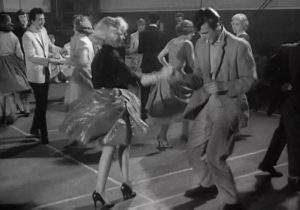

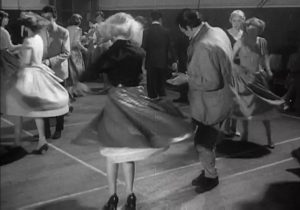
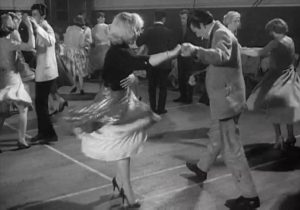
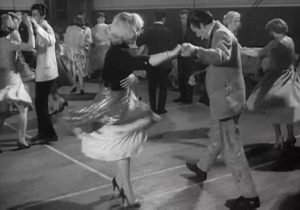
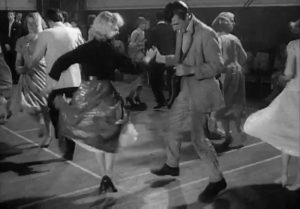
Post Comment